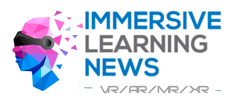The Real-World Use Cases of Android XR for Enterprises
Wondering what the future of immersive tech could look like? It could be powered by Android XR for Enterprise users – the flexible, modular, and versatile platform designed by Google to democratize XR access, and address unlimited use cases.
While other XR vendors build walled garden ecosystems that lock companies into specific devices or systems, Google is building a new horizon. It’s making immersive tech more affordable, scalable, and customizable for businesses in every industry.
With support for built-in artificial intelligence (Gemini), endless development tools, and both smart glasses and XR headsets, Android XR’s potential is limitless. Here are just some examples of how enterprises can use Android XR to evolve.
Android XR for Enterprise: Next-Level Immersive Training
The benefits of immersive training experiences are already pretty well established. Simulations, workshops, and courses in XR can cut training costs, accelerate learning outcomes, improve muscle memory, and boost engagement. But developing custom, accessible training solutions hasn’t always been easy. Android XR for enterprises could change all that.
Within the Android XR ecosystem, companies can build their own apps, pre-infused with spatial computing solutions (for gesture and voice control, or environment mapping), and ready to integrate with the Android-ready apps teams already use.
Because Android XR supports Unity and Unreal Engine, companies can design rich VR experiences and deploy them to multiple devices, from headsets like Samsung’s XR device to smart glasses. They can even embed Gemini AI models capable of offering real-time feedback to workers as they move through modules, or adjusting difficulty curves.
With connected apps for tracking performance data, companies can adjust training programs in real-time. They can even deliver the same experiences to users without access to XR wearables. Already, prototypes like Project Haean from Samsung show great promise for immersive training.
Transforming Remote Support and Collaboration
Android XR for enterprise could be revolutionary for field workers, remote staff, and even hybrid teams. Since the operating system is device-agnostic, any hardware with Android support can be linked to the same platform. This makes data and information sharing simple.
Teams using smart glasses, XR headsets, smartphones, and tablets can collaborate in real time, taking advantage of immersive features and Gemini AI for machine part identification or translation.</span> Google even introduced the “passthrough camera API” to developers this year, allowing for the creation of apps where people can share visual insights instantly.
Android XR offers built-in modules for dynamic scene understanding and AI-powered hand tracking. Imagine what that could do for employees in the Energy industry, healthcare space, or manufacturing environment, who need to connect and share information on the job.
Android XR has the potential to bridge the gaps between teams like never before, while side-stepping the integration issues common with other XR platforms.
Android XR for Enterprise: Collaborative Product Design
Speaking of collaboration – Android XR doesn’t just enhance how disconnected teams work together. It also pave the way for faster, more cost-effective innovation.
Instead of waiting for prototype shipments or cross-time zone Zoom calls, teams can co-design in real time using spatial environments. At TED2025, a public demonstration of the Android XR smart glasses operating system showed real-time translation features, image recognition, and interoperability between Android devices in action, highlighting collaboration opportunities.
In theory, a single product designer working on a new prototype could experiment with a new 3D blueprint while team members from around the world share comments, annotate from their Android phones, and flag issues in the same moment.
Using Unity or Unreal, developers can build fully interactive 3D environments. Add AI from Gemini, and now users can summon spec sheets, request alternate designs, or simulate stress tests just by asking. Plus, since Android XR integrates with the Play Store, companies could potentially create apps that allow customers to test out new products before they’re released.
Data Visualization and Digital Twins
Smart factories, utility grids, mining operations, and more all capture huge volumes of data. But transforming that data into action is tough. Digital twins give these companies a way to access and experiment with insights on a brand-new level.
Android XR for enterprises makes these twins accessible everywhere. On a production line, managers can wear smart glasses, glance at a machine, and instantly see sensor readouts, error logs, or maintenance predictions. Gemini AI could flag anomalies, recommend changes, or alert technicians based on visual cues.
For audits and assessments, professionals could use a headset like the Samsung Moohan XR headset to walk through a factory floor. Even professionals without smart headsets can get involved with a connected Android device.
You could even simulate potential changes. Want to reroute part of the assembly line? Test it in XR before touching anything. Use Gemini to gather data and make updates based on genuine insights, rather than estimations.
Enhancing Customer and Stakeholder Experiences
Android XR for enterprise will revolutionize how internal teams work and upgrade customer and stakeholder experiences. This platform’s flexible nature makes immersive engagement possible across touchpoints, from WebXR experiences to 3D apps on smartphones.
Picture a hospital onboarding new patients. Instead of pamphlets, patients use Android XR tablets to walk through their procedure in immersive 3D. They see what will happen, explore surgical rooms and environments, all from a distance. Or a real estate firm could allow clients tour properties using a headset or tablet.
Even retail brands could create an interactive virtual try-on experience built into a kiosk. Since Android XR supports all kinds of devices, there’s no limit to who can get involved. Plus, thanks to AI, users can interact with content naturally using voice or gestures—no clunky UI needed.
And because it integrates with the Play Store, you can update content, gather analytics, and push new features instantly.
Android XR for Enterprises: The Future of Open Immersion
Android XR might just seem like another operating system at a glance. But for enterprises, it’s an incredible opportunity to unlock immersive experiences. Companies will be able to train their teams more effectively, boost collaboration, support customers, and design smarter, all without having to be locked into a single device, vendor, or expensive rollout strategy.
By making XR open, modular, and AI-connected, Google is paving the way to scalability. You won’t need to deck your team out with dozens of multi-thousand-dollar headsets. Everyone will be able to immerse themselves in an intuitive environment, without the standard restrictions of old platforms.
Still not sure how this all works? Check out our complete guide to Android XR here.
Quelle:


